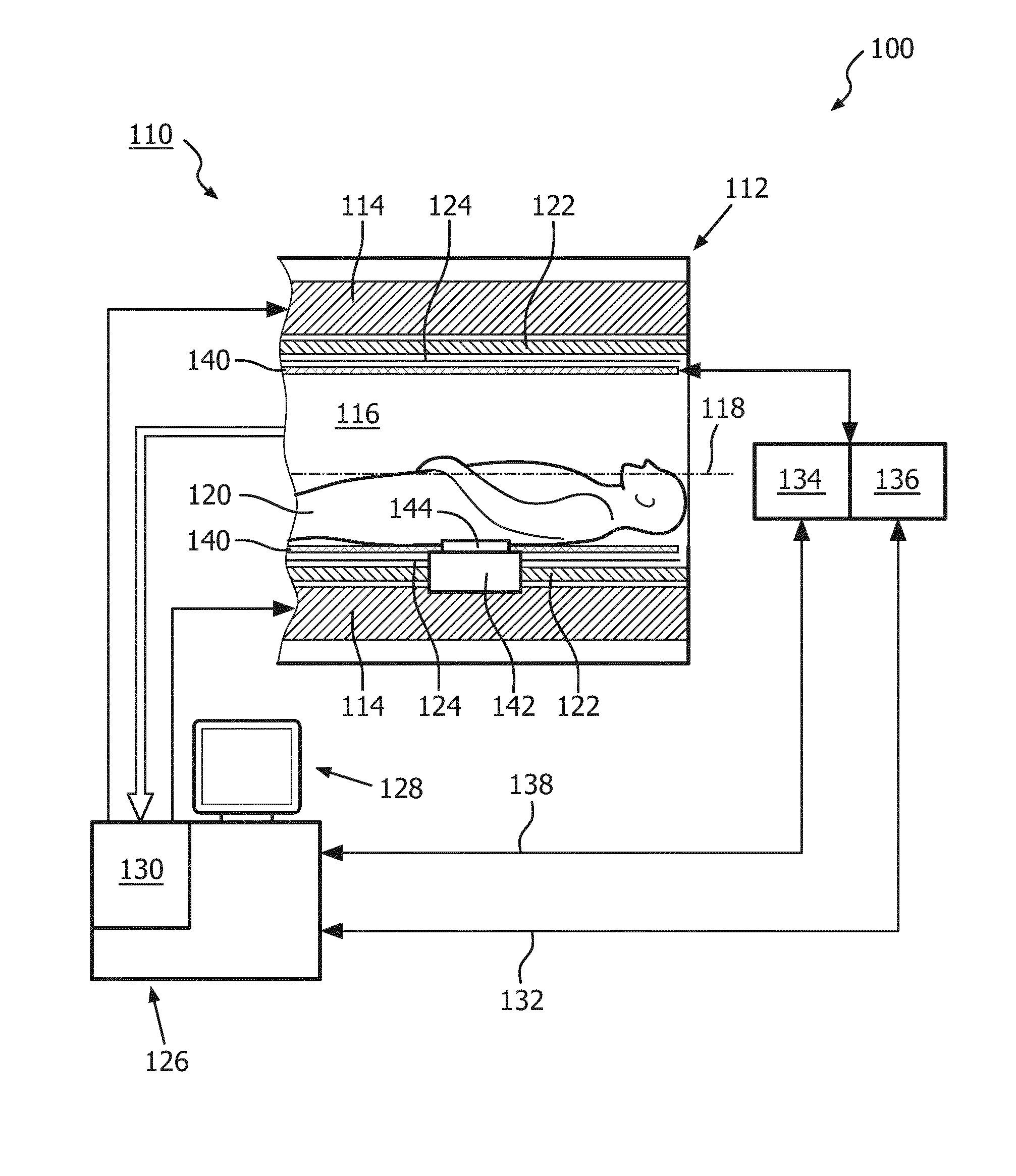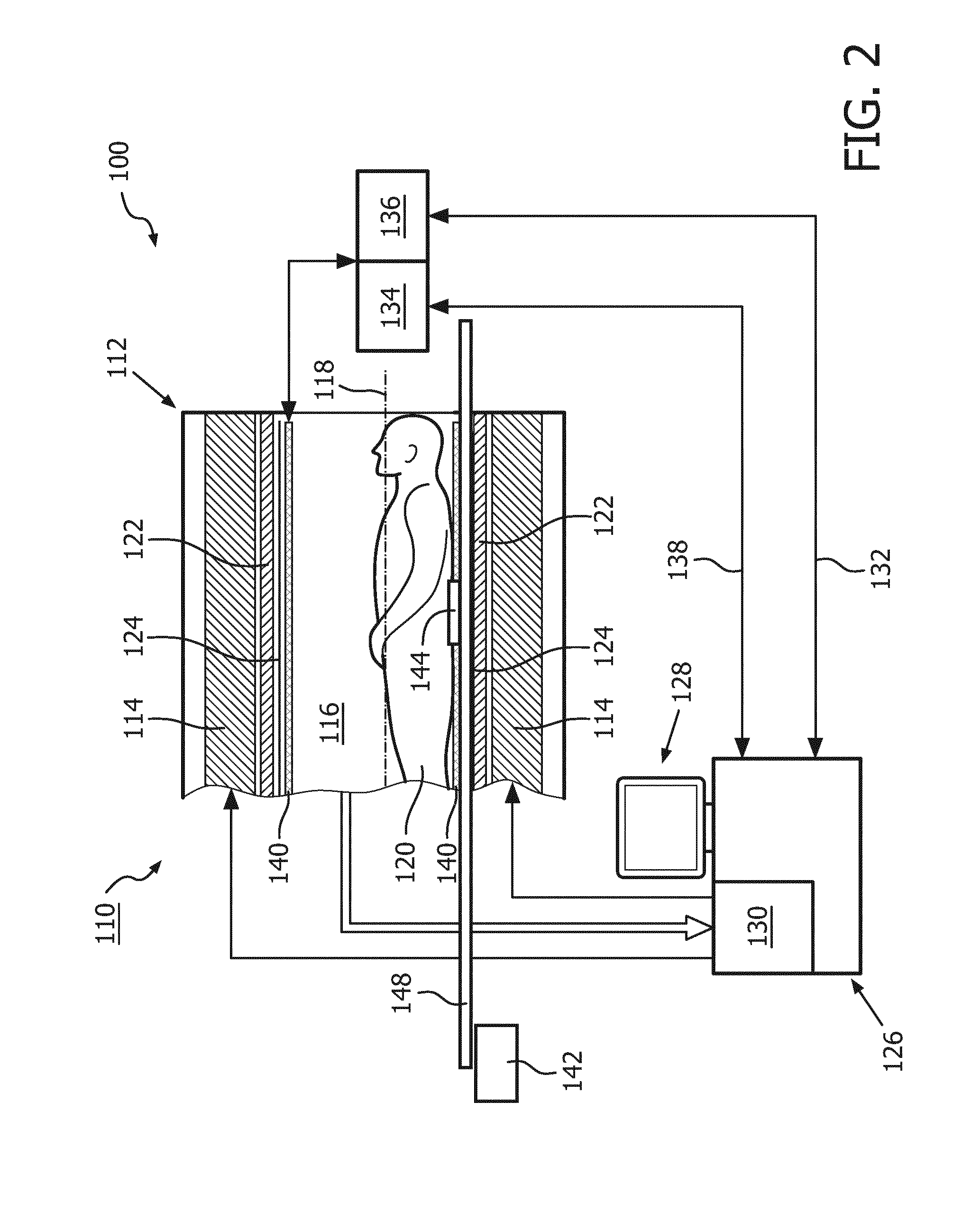Hyperthermia for diagnostic imaging
a diagnostic imaging and hyperthermia technology, applied in the field of magnetic resonance imaging, can solve the problems of difficult measurement of ineffective treatment, cell death due to chemotherapy or tissue necrosis due to heating, etc., and achieve the effect of reducing local hypoxia, improving diagnostic image representation, and reducing local hypoxia
- Summary
- Abstract
- Description
- Claims
- Application Information
AI Technical Summary
Benefits of technology
Problems solved by technology
Method used
Image
Examples
Embodiment Construction
[0041]FIG. 1 shows a schematic illustration of an embodiment of a diagnostic imaging system 100 comprising a magnetic resonance (MR) imaging system 110 and a hyperthermia device 111.
[0042]The MR imaging system 110 comprises an MR scanner 112 and includes a main magnet 114 provided for generating a static magnetic field. The main magnet 114 has a central bore that provides an examination space 116 around a center axis 118 for a subject of interest 120, usually a patient, to be positioned within. In this embodiment, the central bore and therefore the static magnetic field of the main magnet 114 has a horizontal orientation in accordance with the center axis 118. In an alternative embodiment, the orientation of the main magnet 114 can be different. Further, the MR imaging system 110 comprises a magnetic gradient coil system 122 provided for generating gradient magnetic fields superimposed to the static magnetic field. The magnetic gradient coil system 122 is concentrically arranged wit...
PUM
 Login to View More
Login to View More Abstract
Description
Claims
Application Information
 Login to View More
Login to View More - R&D
- Intellectual Property
- Life Sciences
- Materials
- Tech Scout
- Unparalleled Data Quality
- Higher Quality Content
- 60% Fewer Hallucinations
Browse by: Latest US Patents, China's latest patents, Technical Efficacy Thesaurus, Application Domain, Technology Topic, Popular Technical Reports.
© 2025 PatSnap. All rights reserved.Legal|Privacy policy|Modern Slavery Act Transparency Statement|Sitemap|About US| Contact US: help@patsnap.com



